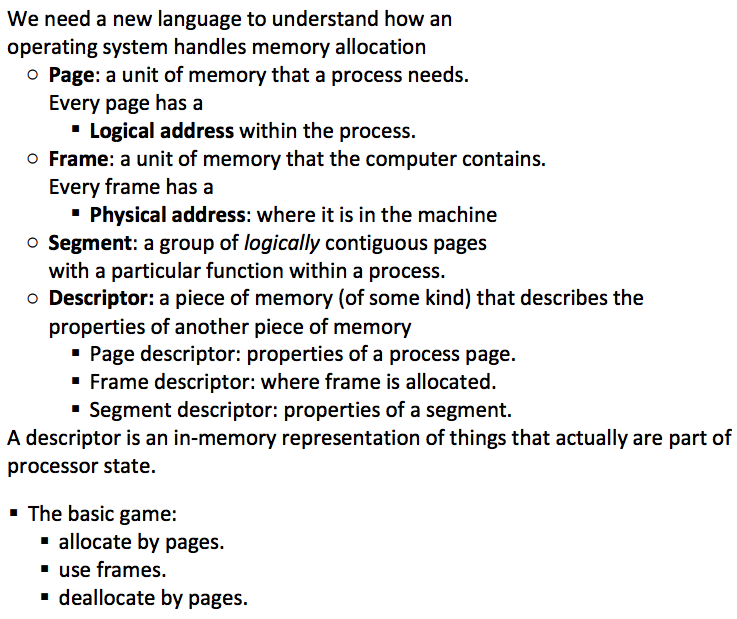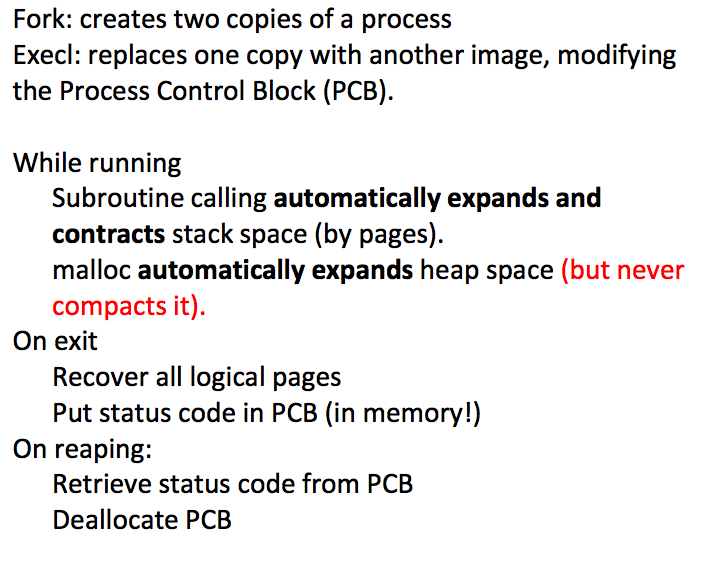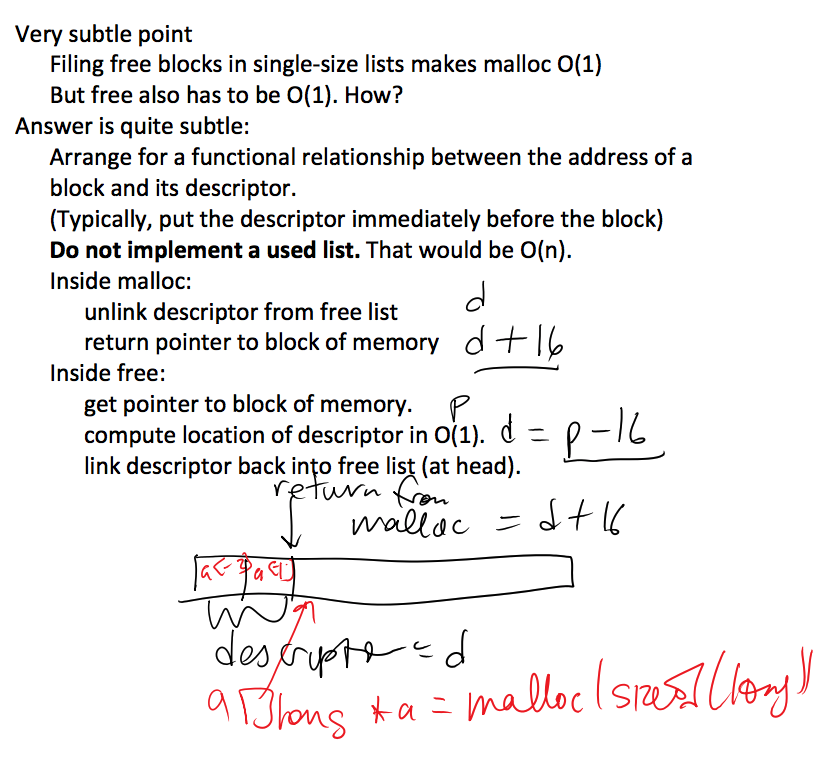Memory Management
2017-11-14 23:18:54
Memory 的作用
- Internal tables:
- File descriptors: Describe how to communicate with devices;
- Process/thread descriptors: Describe how to run a process;
- Semaphores and mutexes: Describe the locations of shared memory;
- File cache: Describe what is on disk;
- Application memory:
- private: for this application only;
- shared: (e.g., between threads);
- copy on write: when forking;
Tiers of memory:

命名

Page: page 是 process's view of the memory;
Frame: frame 是 os's view of the memory;
The life cycle of logical memory:

Malloc:

--> Malloc 的行为(理解)
Malloc 记录两个结构:现在正在使用的block的description以及可以被重用的block的description。为了简便,理解为 free list 和 used list;
当调用 malloc 时,如果 free list 中存在一个足够大的block的descriptor,则把这个descriptor 从 free list 中移动到 used list 中,并将指针返回。如果没有,就向操作系统要更多内存。
当调用 free 时,在 used list 中找到 block's descriptor,将其放入 free list;
Effectively: 所有之前已经 freed 的内存可以直接被 malloc 继续分配。所以只需要在free list 中的 descriptor 不够的时候才会 call sbrk(to add another page);
The buddy System:
这里有一篇文章讲得很好:http://blog.csdn.net/vanbreaker/article/details/7605367;
--> Buddy system descriptors:
struct descriptor {
struct descriptor *next;
void *memory;
} descriptors[TABLESIZE], *free[POWERS];
--> How buddy system work:



总结:
- You ask for m bytes;
- Malloc actually hands out blocks of 2^p - 16;
- Where actual size is such that 2^(p-1) - 16 < m < 2^p - 16;
- The first 16 bytes say:
- block 的长度(2 的幂次方);
- free list 中的 next pointer;
--> 题点
- 注意对于给定大小需求时,实际分配内存大小的推断;
- 注意每次malloc所返回的指针之前的16bytes位descriptor,而这个位置是可以被 write over 的,所以如果 free 修改后descriptor的地址,就会 segmentation fault;